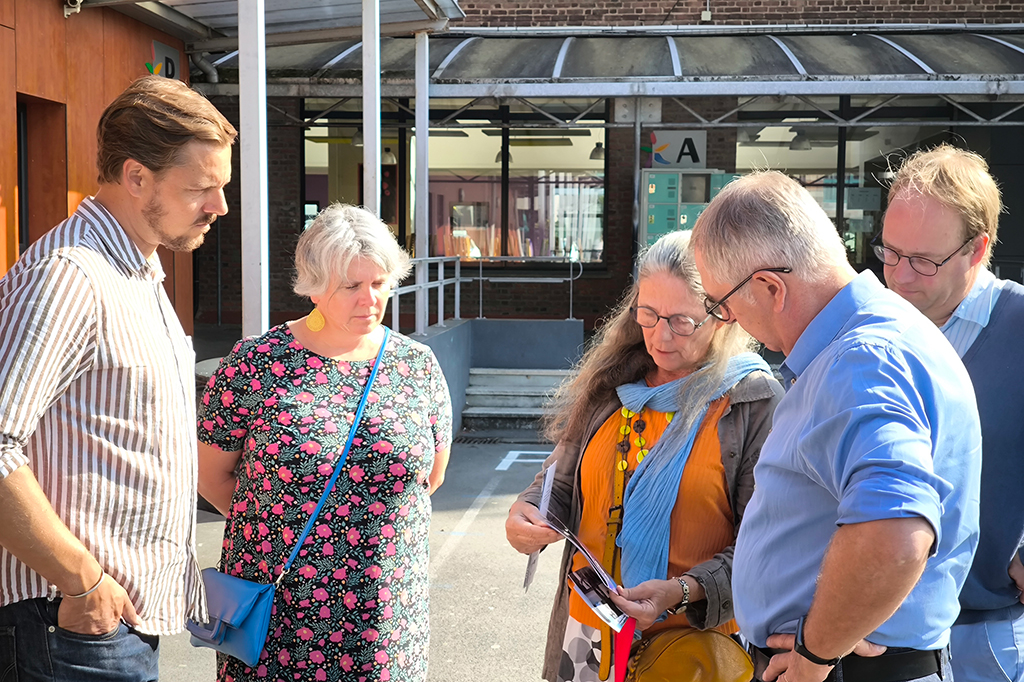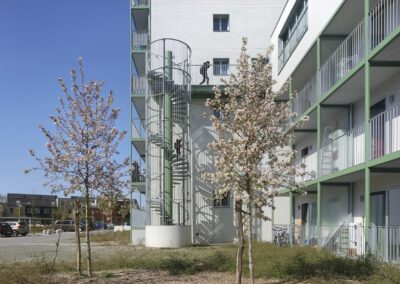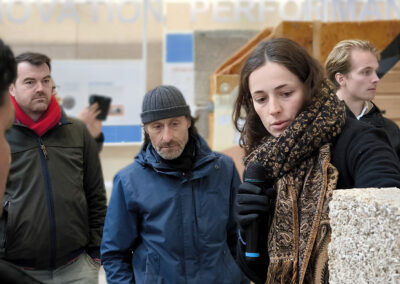Among the projects in the HABITER2030 galaxy, the Méta Plateau Projet (MPP) holds a special place. This year marks its 4th edition and propels the MPP into a new dimension in that it is now a contributor to the European Circular Trust Building (CTB) project. Effectively, the renovation solutions proposed by the students during the previous years will nourish and inspire all the actors united around the CTB. So the MPP is once again a catalyst for positive impact across the architectural, educational and research fields. The MPP also challenges and questions traditional approaches, favouring collaboration, reuse and co-construction in the scaling of retrofitting and the reduction of the carbon footprint of the building sector.
First reflections for the creation of a new centre to enhance Saint Paul de Lambersart
“Do you know where the city-centre of Lambersart is? No? That makes sense because there isn’t one, really.” That’s a quote from an article in the Voix du Nord this past summer. The comment makes you smile and it also reveals several important facts: Lambersart doesn’t have a “real” city centre but it can boast being a “fifteen-minute city”, well-equipped with services at the confluence of its diffuse neighbourhoods. Also to note: the presence of 5 schools that need to be renovated along a major road axis. It is therefore a question of taking these elements into account and seizing the double opportunity offered by:
● The presence of a new greenway that will lead to Lambersart
● The will to create a new entrance into the city from the north
● The arrival of a new tram for 2030
This new entrance to the city will lead to building complex consisting of a private middle school (Dominique Savio) and professional high school (Camille de Lellis) as well as municipal halls, among which is the municipal technical centre, as well as a butcher and a greengrocer, highly prized by the residents of Lambersart.
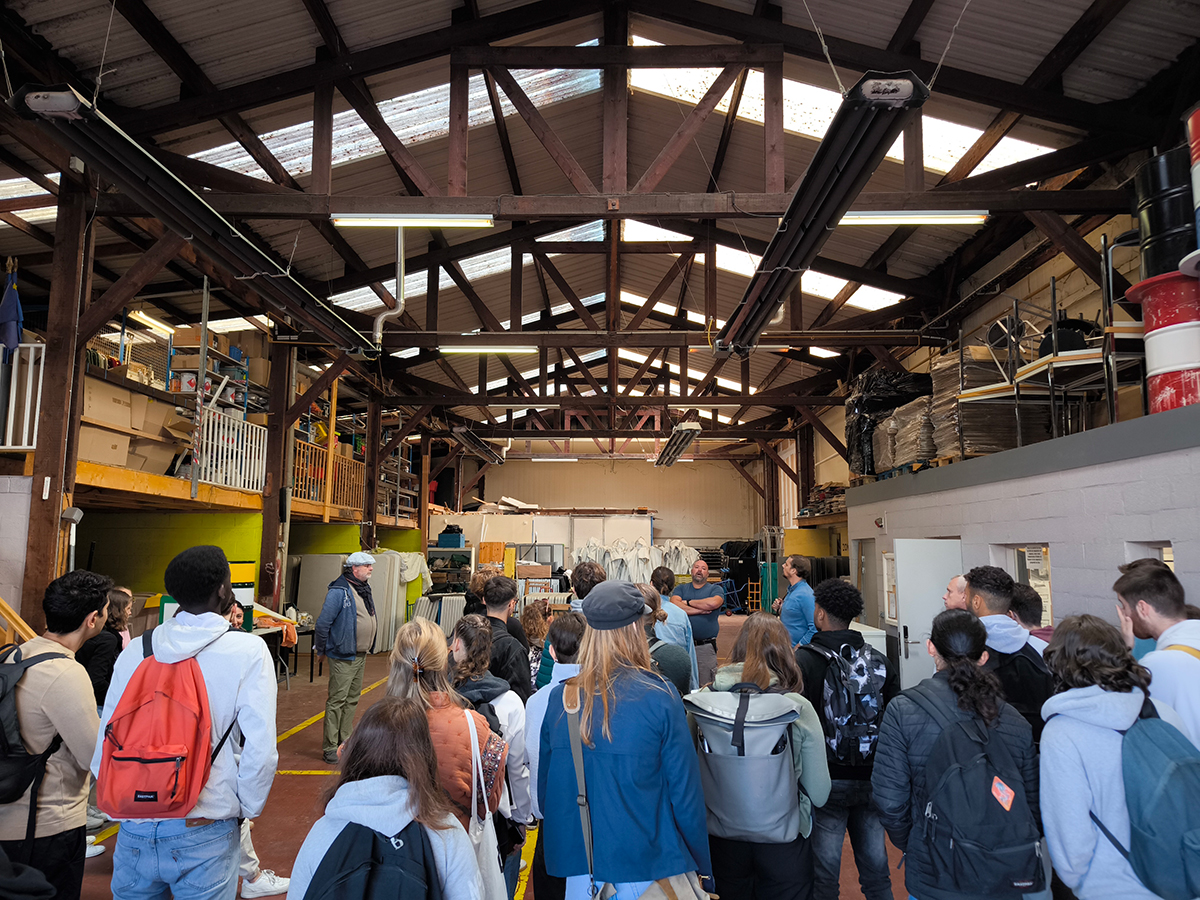
The challenges of the renovation
For HABITER2030, the Lambersart site presents a number of considerations:
● Social: What are the uses for tomorrow? What about the meeting places?
● Architectural: Demolish, rebuild, build, or preserve? How and why?
● Urban planning: City entrance, landscape, greenways, traffic?
● Thermal: To extend the city’s heating network?
● Technical: How to industrialise the site and material?
● Environmental: How to work on a renovation that considers its environment and aims to reduce its carbon footprint?
These initial elements will provide food for thought for discussion topics and will provide students with directions for reflection in the coming semesters.
Groups with complementary competencies to grasp the complexity of the site.
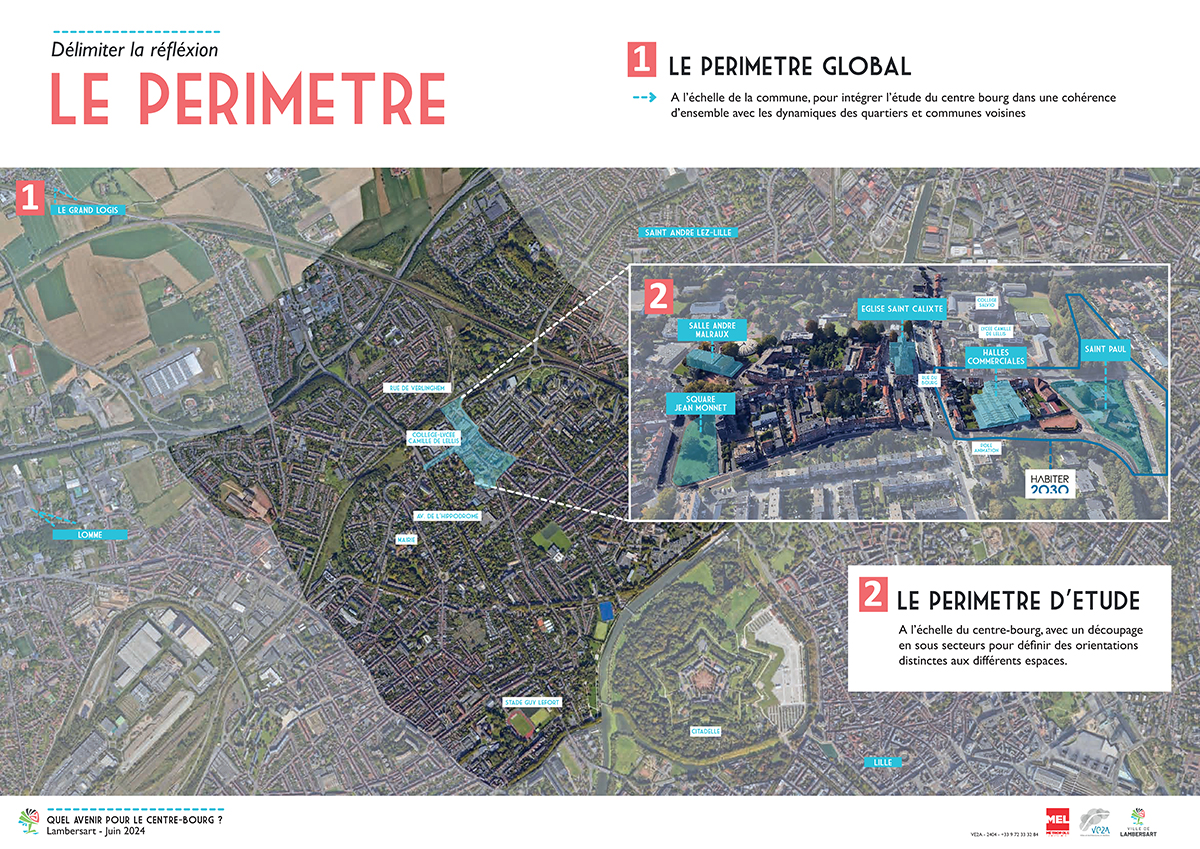
The MPP#4 project covers, for the year 2024-2025, three zones at the convergence of three areas of Lambersart: the downtown and the “conqueror” area which includes the farm area as well as the Pacot-Vandracq area that abuts the edge of the site in question. The perimeter concerns both built and unbuilt spaces, including a farm and hall which includes the municipal technical centre and adjoining exterior spaces. To approach the reflections about all of these areas, the students were divided into three groups, which will address the following topics:
● The environmental retrofit at the neighbourhood level
● The renovation of the buildings and other spaces (farm, hall, carpark, exterior)
● Building a decision-making tool on the subject of the environmental retrofit
The first steps included a site visit to Lambersart followed by meetings with shared perspectives from partners, teachers and students. Continued collaboration through regular meetings is intended to activate collective intelligence.

